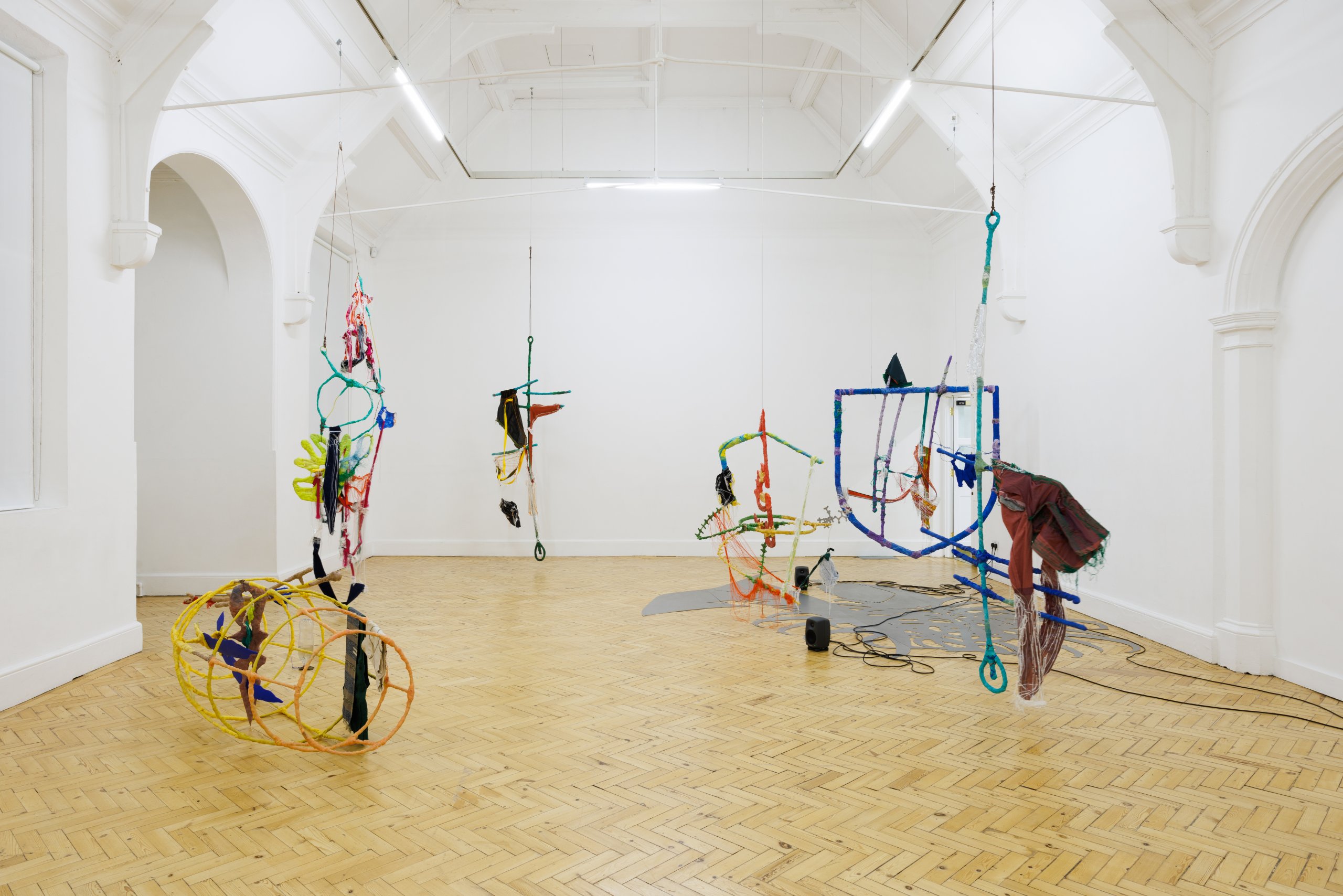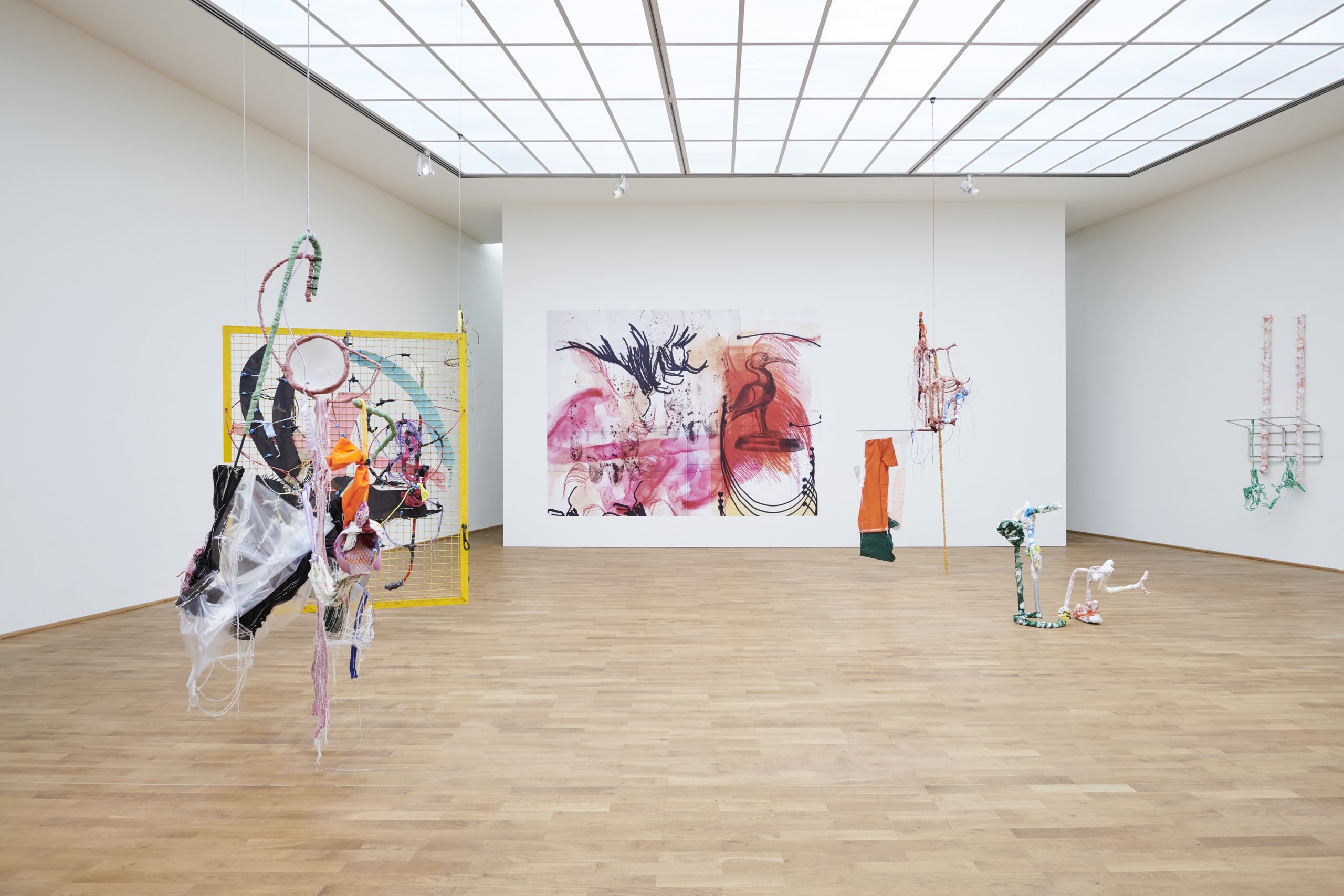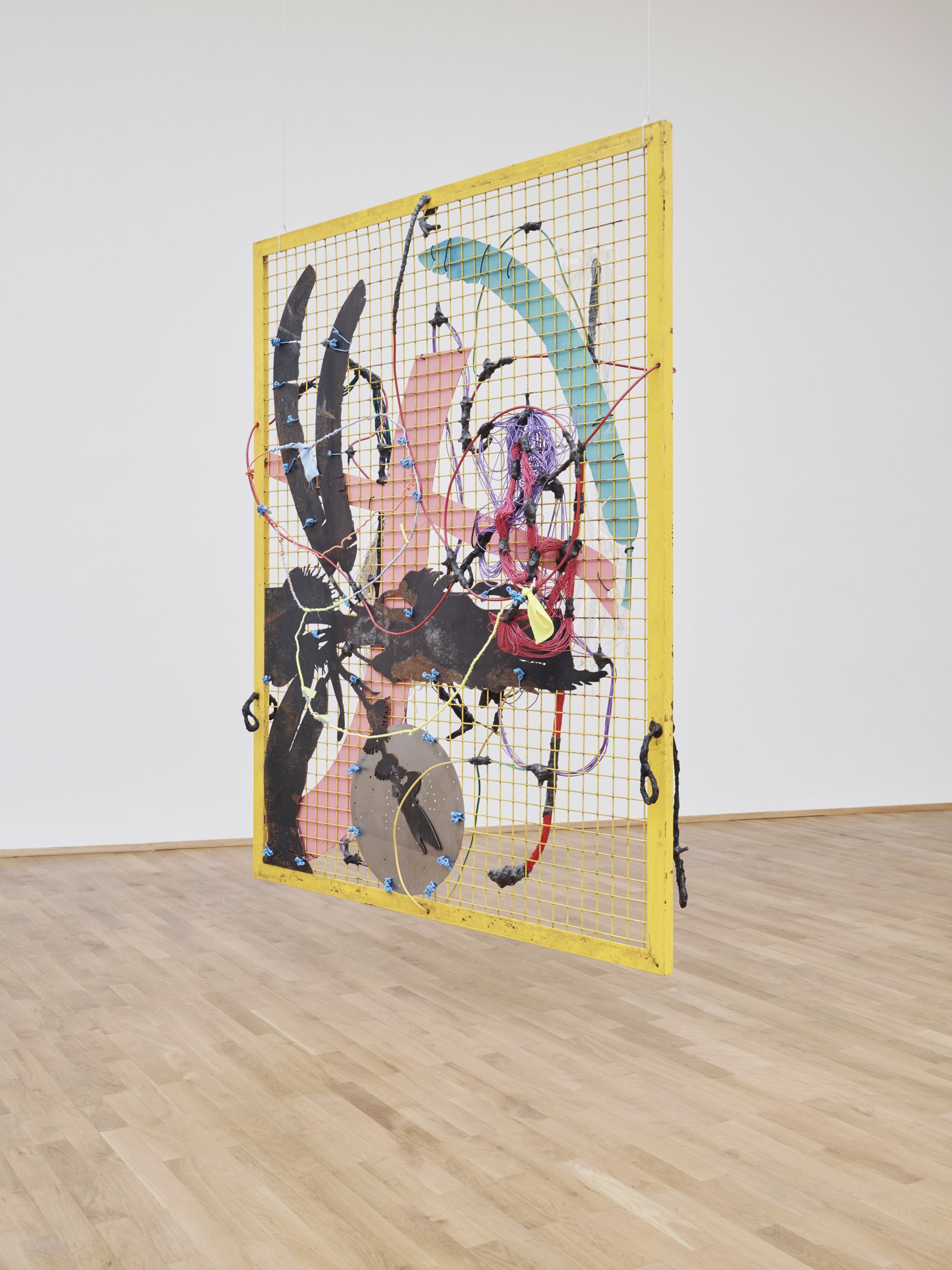Julien Creuzet: ‘Too blue, too deep, too dark we sank…’
Julien Creuzet
Your practice is inspired by your ancestral land, Martinique and your experiences living in Paris. Now for this, your first institutional solo exhibition in London, you add a third context, the influence of the Caribbean diaspora on British culture. How well do these diverse cultural narratives work together in the different mediums you work with – music, video, poetry and sculpture?
The Caribbean is a world in itself, crossed by cultural encounters, often forced, the Caribbean is a zone of experimentation of domination, alienation, inhumanity. How is it possible to translate the impossible, the misunderstanding that persists in the recesses of the DNA of the peoples who live in this sunny region? It is sometimes difficult to scientifically translate human psychology, transgenerational traumas. Your question is difficult. What I offer is an experience to live, to feel, here is the most important thing for me. if I had to give it a name, it would be Poetry…

Can you tell us how your work sheds light on environmental concerns and the relationship between man and nature? How important is the concept of “community” to you?
1. I offer you, a stroll, a change of scenery. That confronts a multitude of questions. Maybe you could see particular details. Points of view that collide. I want to tell you:
Diagram of the Atlantic Meridional Overturning Circulation (AMOC). This oceanic current, part of the Gulf Stream, is taking its source in line with the equator. On the surface, it’s going through the Caribbean, then it’s joining the european facade of the Atlantic and Arctic. Getting cold near the polar circle, the water is going down in the depths to go to the South again. It has a very important role in warming the climate across Europe. Global warming could, via a shutdown of the AMOC, trigger cooling in the North Atlantic and Europe. This would particularly affect areas such as the British Isles, France and the Nordic countries.
2. “Couresse de la Martinique”, endemic snake of the Martinique Island, today almost extinct. Its presence could only be verified on the Diamond Rock, a little island near the main one.
3. Drawing of boat from the Coat of Arms of Bermudas.
4. Inflorescence of Hibiscus Elatus, plant from Jamaica and Cuba island.
5. Infrasound roar of the Hurricane Maria, received from a seismic station in Puerto Rico, 20th September 2017.
6. Commonwealth symbols.
7. Drawing of Red Pride of Barbados Flowers. Red flower tree called Caesalpinia pulcherrima.
8. Bottom part of a parrot, from the coat of arms of Dominica island.
9. Diagram of an English slave ship trip, from Bristol to Jamaica, via Nigeria.
10. Details of the North Atlantic Drift in the Caribbean, going betwen the Greater and Lesser Antilles.
11. Map of the United Kingdom, with some parts removed.
12. Leaf of Hibiscus Elatus
13. Drawing of flamingo, form the coat of arms of Turks and Caicos Islands.
14. View from the sea to the island of Saint-David, part of Bermudas Islands.
15. Dried sargassum, a brown algae that grows and floats in the Sargasso Sea. Due to the increase of fertilizer pollution in the Amazon, the seaweed is growing in huge masses that are washing up in the Antilles shores. There, it emits toxic gas from decomposition. It happened to cause several accidents with animals and humans along the shore.
16. Different trajectories of hurricanes in North Atlantic, according to a model of +2°C global warming.
17. Diagram of an English slave ship trip, from Liverpool to Bahamas islands, via Gambia.
18. Drawing of a Hummingbird, from the coat of arms of Trinidad-and-Tobago.
19. Trajectory of the Maria Hurricane, 2017. Formed in the Sargasso Sea, it was really destructive in the North-East Caribbean. The it changed direction, going through the Azores to end in tropical storm.
20. Engraving of a pineapple from “Story of the Barbados” 1674.

Where can communities gather in cities like London and Paris, for example? Is it through shared dining experiences or musical performances? What are your favorite places in London or Paris to discover Creole and Caribbean culture?
In Martinique, (French department), one would say of me that I am “negropolitan”. that is to say, someone who lives outside the native island, who lives further away in mainland France and more precisely in “France-hexagonale”. For my part, I am crossed by different flow of ideas, cultural, literary, musical, culinary. I try to situate myself at every moment, at every meeting and in all the places, the countries where I have the chance to visit. If you are looking for me in Paris or London, you will probably find me in an exhibition space, or around probably sharing a glass of wine, for the most beautiful discussion. My community is somewhere around there.
We are at a time when the migrant crisis is reaching breaking point – the title of the exhibition, Too blue, too deep, too dark we sank… is highly charged – how close do you feel you get to representing real life trauma in your installations, or do you prefer to consider them more akin to fiction?
I am reading this question, and I wonder who is the person who wrote it. My title is a poem, which can be read on rainy days and sunny days, days of joy and days of sadness. I leave you free to interpret it as you wish. Art and poetry demand the freedom to choose the colourful emotion that we give to our voice, to our words, to our forms. To answer your question with precision there is the social sciences, there is the history of the last 500 years. But if one wishes to be able to feel there is a lush literature. Here are some titles that I recommend: Ntozake SHANGE, For Colored Girls Who Have Considered Suicide When the Rainbow Is Enuf, London, Eyre Methuen, 1975. or again: Saidiya HARTMAN, Lose Your Mother, A Journey Along the Atlantic Slave Route, New York, Farrar, Straus and Giroux, 2007.

Your sculptural work, which combines found objects and detritus washed ashore with materials given to you by other artists, is distinctly colourful and textural. How abstract is this, or is each element closely related to flags of newly independent Caribbean nations?
The exhibition that I propose to you is not an illustration of a subject. Art is for me the sensitive translation of the world we share.

What other projects are you working on, where else can our readers see your work in 2022?
In this period of global pandemic, the movements are uncertain, next February and March I would like to have the chance to experience the sound performance of Anaiis at the Camden Art Centre. New forms will arrive, in Chicago, in Arles, in Lisbon… The future will tell me.





